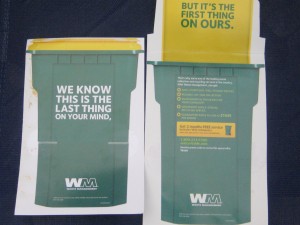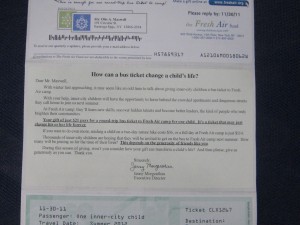The offer is what readers get when they respond to your call to action. Your success depends on making the offer as clear and appealing as you can. Very often you will be asked by your client to help design the offer. This is a chance to earn extra response points (and brownie points) with a creative concept which is also sound marketing.
In a direct sale, the product or service IS the offer. The prospect is going to respond not by asking for more information but by making a financial commitment here and now. Catalogs and e-commerce sites are filled with many direct sales offers, which can be presented economically because each takes only a few square inches of space. Catalog writers learn to write descriptive copy very efficiently; in a paragraph or two, you will give the reader everything they need to make a buying decision and also to distinguish the product from other similar products, sold by you or by your competitors.
A hard offer leads the reader directly into a sales conversation. Example: “call right now and we’ll set up an appointment with a service specialist at your convenience.” The response rate may be low but the leads will be very high quality, because only those who are seriously interested will respond. Note: your client may want to sugarcoat the sales visit and call it a “free consultation” or some such but most prospects will see the hard offer for what it is.
From a copywriter’s perspective, hard offers are risky. It’s entirely up to the sales force to turn those leads into sales and if they don’t, it will be your fault for not sending them good leads in the first place. If possible, recommend instead a….
A soft offer is information or a free trial that lures the reader into the sales conversation through an intermediate step. If we are doing lead generation copywriting, this is what we want to recommend because we maintain control. Literally, we are not “selling” the end result but rather the info kit, the webinar, or similar information. All we need to do is convince them that what we have to offer is worth a few minutes of their time in review.
Often the information will come “arm attached” in that it is accompanied by a call or visit from a salesperson. We can’t control what happens in that follow-up conversation, but we can deliver a very interested prospect through the way we set up the value of the information to be obtained.
Limited time offers and add-ons sweeten the pot for the prospect while they allow the merchant to influence buyer behavior. I’ve done some work for a medical alert service (the pendant around the neck, connected to a radio device that alerts an operator when the button on the pendant is pushed) and they are constantly testing such add-ons as a free lockbox (to hang on your door handle with a key inside, so EMS personnel can get into the house) and free coverage for your spouse when you buy today for yourself.
When you are writing about these more complex offers, you need to invest the copy real estate to make the add-ons understandable and appealing. In particular, if it’s a limited time offer paint a word picture of the benefit in responding now and the pain or disappointment to be expected if they wait.
Final tip: if your offer is very rich and involved, you can often build your communication around its components. I’m thinking of a continuity package I wrote for a fan club where you could get regular shipments of the “Highlander” TV series on video. The sign-up offer was a selection of “best of” and “blooper” videos as well as a free t-shirt. I used the components of the offer to pull the reader through the package in a “but wait, there’s more” technique, and then introduced the final premium in the P.S. which explained it would only be sent to readers who found a sword sticker hidden in the package and attached it to their order document.
Excerpted from my new book, Copywriting that Gets RESULTS! Get your copy here.

